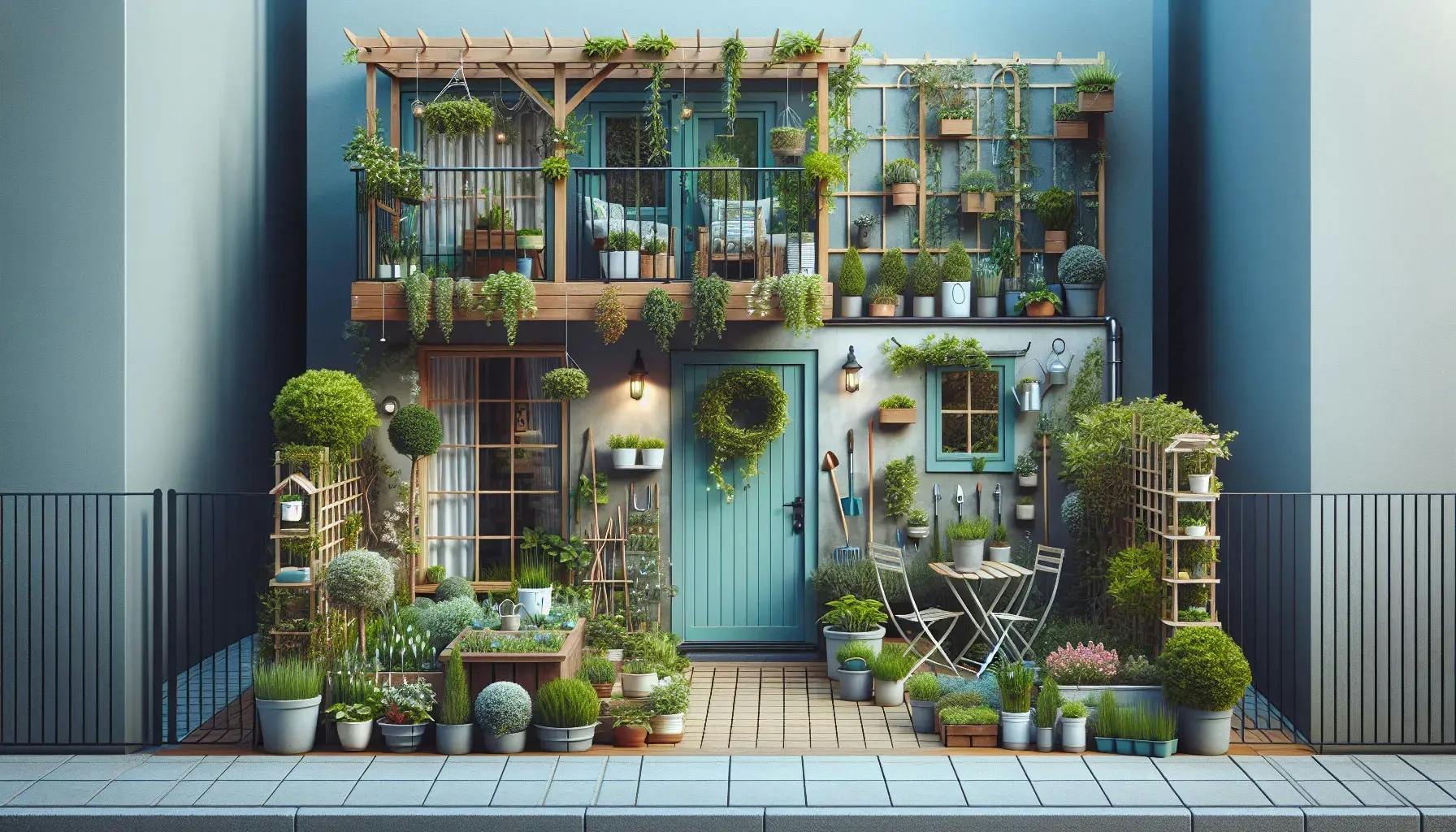Maximizing Small Garden Spaces
Best of Home & Garden

Welcome to a comprehensive guide on maximizing your small garden spaces. Even with limited space, you can create a lush, vibrant garden that brings joy and serenity. This blog post will provide you with practical, innovative ideas to transform your small garden into a green haven. We will explore various techniques, from vertical gardening to container gardening, and how to choose the right plants for your space. Let's embark on this green journey together!
The Art of Vertical Gardening
Vertical gardening is a game-changer for small spaces. It allows you to grow plants upwards, rather than outwards, saving valuable ground space. You can use walls, fences, or trellises to support your vertical garden.
Climbing plants like ivy, clematis, or passionflower are perfect for vertical gardening. They naturally grow upwards and can cover a wall or fence with lush greenery. Hanging baskets are another great option. You can fill them with flowers, herbs, or even vegetables.
Vertical gardens not only save space but also add an aesthetic appeal to your garden. They can serve as a green backdrop, creating a sense of depth and richness. Moreover, vertical gardens can provide privacy and shade, enhancing the comfort of your outdoor space.
Embracing Container Gardening
Container gardening is another effective way to maximize small garden spaces. It involves growing plants in pots or containers, which you can move around as needed. This flexibility allows you to make the most of your available space.
You can grow a wide range of plants in containers, from flowers to herbs to vegetables. Even trees can thrive in large pots. The key is to choose the right container for each plant. It should be large enough to accommodate the plant's roots and have drainage holes to prevent waterlogging.
Container gardening also offers endless possibilities for creativity. You can use different types of containers, from traditional pots to recycled items like old buckets or boots. You can also play with different arrangements, creating a dynamic, ever-changing garden landscape.
Choosing the Right Plants
The choice of plants can make a big difference in small garden spaces. Some plants are better suited for small spaces than others, either because they grow slowly, stay small, or can be easily pruned to keep their size under control.
Herbs are a great choice for small gardens. They are compact, easy to grow, and useful in the kitchen. You can grow them in pots, in the ground, or even in a vertical garden.
Flowering plants can add color and fragrance to your garden. Choose varieties that bloom at different times to ensure a continuous display of flowers.
Vegetables can also be grown in small gardens. Choose compact varieties or plants that can be trained to grow vertically, like tomatoes or cucumbers.
Making Use of Every Inch
In small garden spaces, every inch counts. You need to make the most of your available space, and that includes the corners, the edges, and even the air above your head.
Corners and edges are often overlooked, but they can be turned into valuable gardening space. You can plant tall, narrow plants, use corner planters, or install vertical gardens.
The air above your garden is another untapped resource. You can hang baskets or pots, install a pergola with climbing plants, or even hang a vertical garden.
Remember, the goal is not to cram as many plants as possible into your garden, but to create a balanced, harmonious space where every plant has room to grow and shine.
Incorporating Multifunctional Features
Multifunctional features can help you maximize your small garden space. These are elements that serve more than one purpose, saving space and adding functionality to your garden.
For example, a bench can serve as a seating area and a storage box for your gardening tools. A trellis can support climbing plants and serve as a privacy screen. A raised bed can provide a rich soil for your plants and define different areas in your garden.
Multifunctional features require careful planning and design, but they can make a big difference in small gardens. They can help you create a garden that is not only beautiful but also practical and functional.
Creating a Sense of Space
Even in a small garden, you can create a sense of space. This involves using design techniques to make your garden appear larger and more spacious than it actually is.
One technique is to use color strategically. Light colors make a space appear larger, so you can use light-colored plants or garden features to create a sense of depth.
Another technique is to use mirrors. They reflect light and images, creating an illusion of space. You can use garden mirrors or mirrored garden ornaments to enhance this effect.
Creating a sense of space in a small garden is not about fooling the eye, but about enhancing the beauty and enjoyment of your garden. It's about creating a garden that feels spacious, comfortable, and inviting, regardless of its actual size.
Wrapping Up: Maximize Your Small Garden Space
Maximizing small garden spaces may seem challenging, but with the right techniques and a bit of creativity, you can create a beautiful, functional garden. Whether you choose to embrace vertical gardening, container gardening, or both, remember that the goal is to create a space that brings you joy and serenity. So, go ahead and unleash the potential of your small garden. Happy gardening!